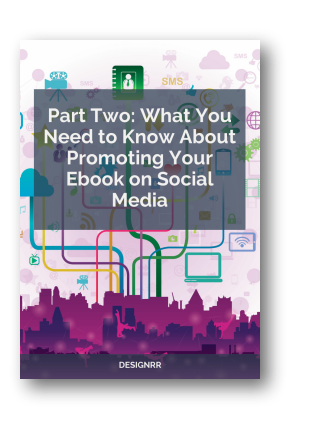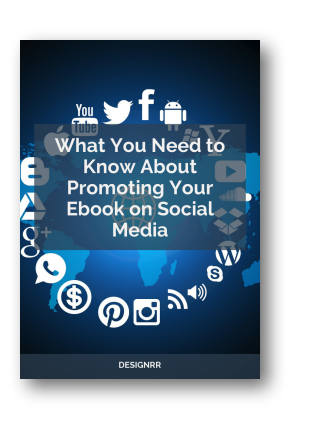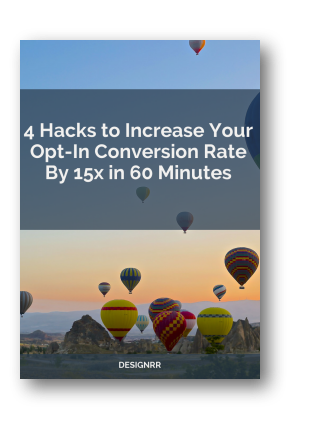Why should marketers repurpose their content?
To repurpose content is simply to take one asset and reuse it elsewhere. In theory, that sounds simple enough, but in practice, it can get complicated.
In order to make it work properly, it helps to produce content with repurposing in mind, so you can quickly slice and dice it into different formats.
When you concentrate your resources on producing one amazing asset (say, an in-depth blog post or video), you’re likely to produce a better piece of work than you would by dividing your attention across every channel you’re responsible for.
By creating content intending to repurpose later, you can reuse bits of it elsewhere without your audience feeling like you’re cutting corners. Which frees you to concentrate on doing one thing really well, while at the same time getting lots of more work done with much less effort.
Creating high-quality content is a very important aspect, not only to achieve high ranks, but also to make users or readers happy. We all know that running a blog with consistently useful and high-quality content can sometimes be hard as it is a resource-consuming operation.
So, why not get the best out of each content that you’ve worked on already?

Sometimes when you create a new piece of content, you don’t want (or don’t have the means) to reinvent the wheel. And why don’t you get the most out of the material you’ve been working on?
All you need to do is to repurpose your existing content. Not only will you save money, but you will also extend the reach of your blog and maybe find new ways to reach your audience. It may be a challenge to find the right ways to repurpose content. That’s why we created a list of the best ways to repurpose content.
There are different tactics that suit different people. Read them all and select the ones that best fit you.
1. Convert your current blog posts into How-to Guides eBooks
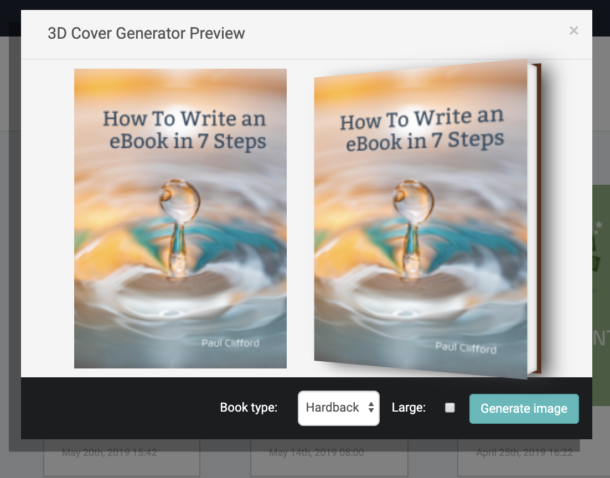
After writing for a while on topics in the same area, you eventually collect enough knowledge and experience to train somebody in the field (at least at a basic level). That’s true of all fields, not just SEO (think cooking, programming, DIY, etc.) So why not put all that experience to use and build a guide on how to do something by gathering pieces of valuable information that you have spread over time in one tidy, structured, easy-to-follow user guide through many posts? How-to guides can have a very high re-reading value if written and edited in a simple and concise way, as they are useful both as a tutorial for beginners and as a reference book later on. If you want to convert your old blog post into an ebook, you can use Designrr ebook creator and import from URL:
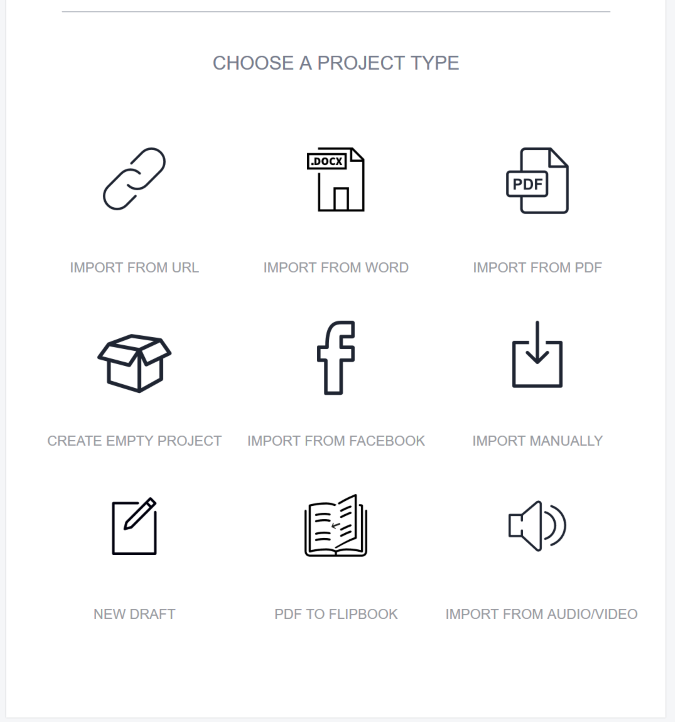
2. Convert your existing content into Podcasts
Podcasts are a great medium for repurposed content. People love them and the freedom of listening to them at your own leisure is a huge bonus. Podcasts are extremely popular. Here are some interesting stats: 51% of the population has listened to a podcast, with 32% listening at least once a month and 22% listening every week (Music Oomph). 74% of podcast users listen to podcasts to learn something new. (Edison Research).
So podcasts are the Netflix version of radio shows: they can be fun and/or enlightening, they don’t require you to be active and they can be “digested” whenever you choose to. In terms of convenience and accessibility, that last aspect really hits a sweet spot. How many articles/videos can you read/watch while driving, working or doing housework? As long as you ensure a certain level of technical quality, the serial form also helps to introduce new avenues and experiment with content and form.
Even if some attempts may fail, listeners usually return to a podcast they like once the initial attraction has been established (just like a television show, not all episodes will be great, but you’ll always tune in to watch the show).
3. Gather internal data and create case studies
If you like churning out copious amounts of data hoping to find valuable patterns that could guide your decisions, there is value for re-using and analyzing this type of data. You may be more interested in the quantitative aspect, of course, but there is plenty to learn from a more qualitative approach (especially for others).
Trying to understand why something happened can be very satisfying in terms of cause and effect, and it’s an interesting mental exercise, both for you as the person behind the research and for the reader. A good case study is less comprehensive than a thesis, but from a creative standpoint it is also more challenging and, if done correctly, it can earn you an equivalent amount of recognition.
4. Use interviews to create an expert advice ebook
If you are regularly conducting interviews on a specific topic, you may want to consider compiling them into an ‘expert advice’ type ebook. Creating a standalone ebook certainly has many benefits (more on that later), but there are some particular advantages of adding in the ‘expert advice’ angle.
For instance, there aren’t so many of them; even Google Search’s first pages don’t come up with so many relevant results, which isn’t the case with most of the other examples in this article. The reason may be that one piece of expert advice is hard enough to get, let alone enough to publish an entire book.
There’s also the benefit that you don’t have to create content on your own (although you still need to make the interviews happen). In fact, if the advice comes from a number of respected experts, people will find it more important or convincing than if it came from a single source.
Of course, you will still have some input in structuring, designing and segregating the different sections of the book into one coherent story, and that may be exactly what makes it possible to publish the material as an ebook, as opposed to allowing it to stay spread across multiple articles on your website.
5. Repurpose your content through Quora and Reddit

It’s worth reading, commenting on and sharing your post with others. What’s likely to happen if you submitted some of your ideas to someone on Quora as a comment? You’re opening up your content to discussions or debate. Or you can also use your post to start a Reddit thread. Although these two examples in many ways (starting with the type of forum they represent) are quite different, what they have in common is:
A large number of experts contributing to the post, more prominent on Quora, but also present on Reddit.
You will get lots of opinions, some of them strong. But with the right etiquette, you can have some respectful discussions.
So, while the reward may not always be an easy win, you can be sure it will be the result of your content and yourself being seriously considered and exposed.
6. Gather your statistics, tips, tricks and share using Twitter
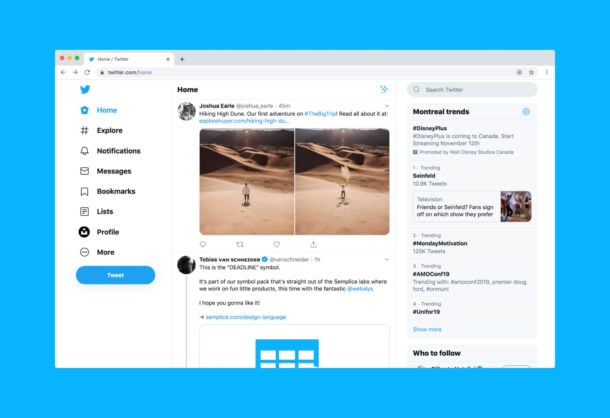
Micro-blogging (as usually defined by Twitter) is about saying a lot with very few words (multum in parvo, as the Latins would say). Of course, it is also possible to achieve brevity (or conciseness) by pictures (to fulfill that old adage) and that’s where things can really take off. It is possible to present the same knowledge in a myriad of ways with different effects each time. Nothing beats well-designed statistics when it comes to “share-ability.” A well-made infographic is, however, not only eye-candy but also a valuable educational tool.
7. Optimize your old blog posts with new information

This also means that you update previous posts with the newly found knowledge as you get a better or more full view. It’s not about recycling, as it’s about bringing things back into relevance with a fresh, more informative look at them. Just as you thought a certain SEO tactic was good and useful at first, others might have assumed the same thing. But coming back now, after further work and putting forward a more nuanced approach, could also support others. It could also help people who are new to the debate and have not had the opportunity to witness the original post and its comments.
8. Create spinoffs from your existing blog posts
Once you’ve discussed a subject, it doesn’t mean it’s a deal and that’s finished. Innovation is widespread in all fields, particularly technological ones, so what you found to be true last year may no longer apply (or last month). Sequels are a common thing in Hollywood. There are many explanations why a follow-up article may be relevant: something has changed and there are now more reasons to do (or not to do).
You have communicated with readers and industry experts in the meantime and discussed the subject, finding out that there are more worthwhile items for your list than you might initially have thought. If you have a comment section on your blog, maybe someone had a better insight or concerns that might need addressing. Whatever the case may be, broaden your article collection.
9. Design a SlideShare presentation

You can convert your existing content into a slideshow on a slide deck and upload it to sites such as SlideShare. The platform allows you to search by subject and users, giving uploaders the advantage of a fame-like “channel”. Despite the general feeling of “death-by-powerpoint” in class and corporate environments, it can be quite an exciting prospect to go through a presentation on your own. It’s more enticing than a document and more interactive than a video. It also helps you to inspire the reader with more than content (think about the design aspect and be more creative).
10. Create infographics
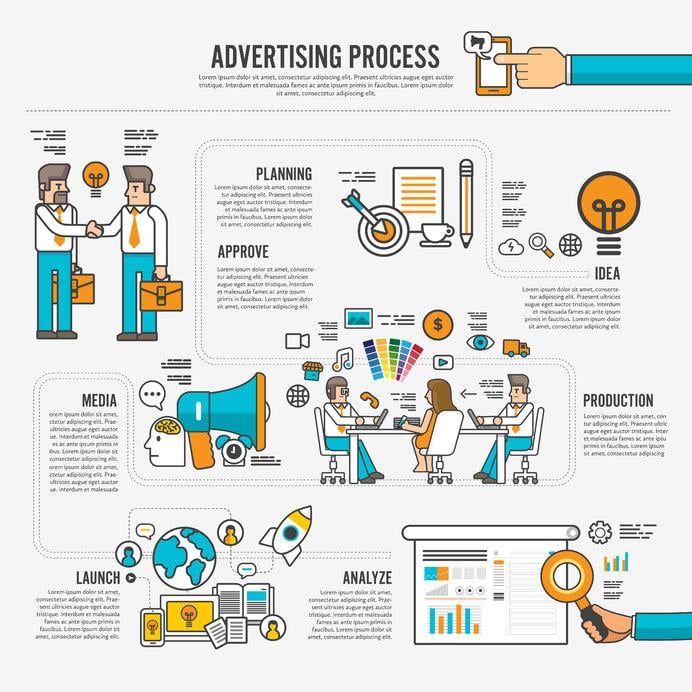
It can be quite difficult to create a good infographic. It needs to show all the relevant information, remove any unnecessary or irrelevant data, make sense, have scientific validity while also catching the casual viewer’s eye by being both original and good-looking.
In reality, gathering the information you want to present to your audience may be less difficult than designing the way you want to present it. But the outcome might just be worth it, here’s why:
Infographics can increase web traffic by up to 12% (Source).
Infographics have had the biggest increase in usage among B2B marketers in the last four years — now at 65% (Source).
Besides, you don’t have to start from scratch or have a wiz-designer squad, because if you just start, there are plenty of templates and tools you can use to design great infographics.
11. Design a Pinterest instructographic

A cousin of the infographic, instructographics looks and feels very close, but focuses more on the dimension of how. The word itself is a mashup of instructions and graphics, so the concept will obviously have an aspect of teaching. With content like this, Pinterest is a popular place because it is visual and actionable.
12. Combine articles into a full ebook
You may think you’ve got enough material for a book when you’ve published content for long enough. And maybe that’s true. So why not create a book, or rather an e-book, if that’s the case? There are benefits for you and your fans in an e-book. As an e-book publisher, you have enormous versatility and choice in terms of structure and design, allowing you to come up with a unique product. As a reader, an e-book is easy to carry (whether on a desktop, tablet, smartphone or e-reader) and easy to access. It also takes too little space (if any), you can quickly switch between chapters and sections, as well as highlight or bookmark paragraphs or pages.
13. Guest posts on topics you already wrote
Being educated about a specific topic means that you are no longer confined to your own soapbox, but you can also (at least for a short time) jump on others. Once you have enough experience on a subject or niche, you may need to write guest posts for other people who may have completely different audiences than you do. There are plenty of websites that allow guest posting and a lot of advice on how to do it effectively and get the most out of it (we’ve written about it in the past).
14. Use multiple points of view to promote your existing blog
This is at its best pure marketing. The comparison of this modern-day culture would be to have several teasers and trailers for a film. What you’d be doing is pretty much: marketing your post from multiple perspectives (and possibly for multiple audiences).
That way, you can be sure that you could draw in a different crowd if you’re posting a different image and tip every day. People love variation in lists, because if they don’t like one recommendation from your list, they can try others.
15. Repurpose articles by turning them into videos

Our community has become more and more visual compared to reading. This is clear not only from the tremendous amount of video content posted daily on YouTube and other similar sites but also from the omnipresence of video content on nearly any other medium that is not devoted to video production (such as websites, forums, social networking sites, etc.).
Cisco projects that global internet traffic from videos will make up 82% of all consumer internet traffic by 2021 (Source).
A written post appears to signal effort, saying “Hey, if you’re tired, you’ll need about 5 minutes to read me.” Nothing is said by a video, it just gives you no warning. Videos are meant to start running as you scroll down, especially on mobile Facebook. If something catches your eye, you’ll probably watch it until the end, even if otherwise you wouldn’t have clicked on it.
16. Turn your video into a transcribed blog post

You’ll also want to cater to those who do want to read, but have the option to view your video as well. You can transcribe your video into text and provide bullet points, so they can follow along. If you already have a blog post, you can either post the transcription in the same article or create another post that mentions “VIDEO” and “TRANSCRIPTION” so that you can cater to a different audience.\
Pro Tip: If you use Designrr’s video transcription software, we provide a feature called Dynamic Transcript, where we grab images to help visualize the text transcription, like the screenshot above and below, which then can be used to publish a blog post.
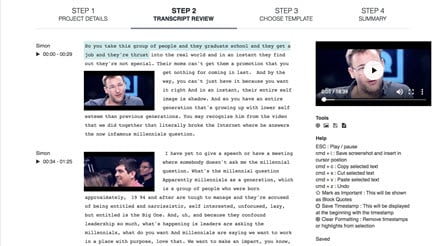
17. Host a webinar
The next move in the development of audio-video is a webinar that allows you to discuss a subject and engage the audience in conversation. Your current content can be a perfect jump-off point for a webinar, or for your final presentation, you can use a collection of blogs as analysis.
18. Create podcasts and have industry leaders do the job for you

The most important elements that can affect a Podcast’s performance is not what you say. With a Podcast, it doesn’t need to rest exclusively on your shoulders to provide the content itself.
In reality, you can build a sustainable plan mostly (or even entirely) based on interviews with writers, artists, comedians, or any other form of expert. So why not try to get industry leaders to give it if you don’t feel confident enough to offer your own advice? This takes a totally different set of skills, but it also comes with some built-in benefits (like the fact that industry leaders already like to think about how and why they are industry leaders, so they have taken out half of your job for you).
19. Compile your customers’ frequently asked questions from Support into an FAQ Page
FAQs are underrated. It contains compilations of useful information that can overcome objections. As with almost every other example in this list, there are rules on how good FAQs can be made, both in terms of content and structure as well as design.
Some FAQ pages are designed to ease the online customer support requirements. Most companies are getting the same questions over and over. It can be frustrating and costly for the customer and the company to react to them all through email or chat.
Just make sure that they are really frequently asked questions.
20. Find the best questions you get on support and turn them into individual blog posts

It shouldn’t be shocking that some of the most interesting questions that you’re going to try and answer will come from your readers, people who rely on your customer support. There are, of course, many websites out there that bring together people and can be used to get answers to one’s burning questions. But nothing beats maintaining a personal relationship with your followers and trying to find an answer even if you don’t know what it might be beforehand.
In fact, if your readers have blogs or websites themselves, turning one of their questions into a full post could generate a large amount of goodwill in terms of building relationships.
21. Converting testimonials from your users into quality content
There is another use for testimonials that is more reader-oriented.
There is something about how users learn from their peers that the conventional experience, written by you can fill. Finding someone else who uses your product would probably be more effective than all of the world’s results.
Of course, you can’t just throw out the words of people and hope they’re going to inspire them, you have to pay attention to how and when you do it and also try to remain true to the original message as it was written/recorded by the person giving the testimonial.
22. Have your existing customers create videos using your product

This is an even better testimonial variety. It is also somewhat detached from the testimonial, as it may be less of a constructive effort and more of a fair exchange. That said, it’s still a real message. You don’t ask your customers to make up stuff, or say they like your product if they don’t. It can be a video that they come up with themselves, or something that you put together, and they just decide to show up in it.
In any case, the involvement of customers in the video must feel real and honest. It could be even more convincing if the experience shown is not 100% positive (maybe at the beginning they had a challenge, but they resolved this, or perhaps they didn’t know how to use a service, but the customer support had a solution).
23. Creating a daily email series

Either a single, in-depth article or a series of articles on the same subject, is well suited for bite-sized chunks, which can be suitable for a daily email series.
For example, take this post that you’re reading. By adding a few more notes, illustrations, and images, each of these repurposing approaches could be an email of its own. The basis for a 24-day email series to extend the life of your content is already in place.
Once you have your email series all sorted (the best way to go is to get free or paid services like MailChimp and Campaign Monitor), you can provide the series to your blog readers and use it as an opportunity to collect new leads and subscribers.
24. Convert your blog posts into valuable online courses

All content can be educational, but some cases are more successful than others depending on the manner in which it is delivered (and usually involves making learning an active process in which the student has goals and opportunities to achieve them).
With some editing effort and some knowledge, you might take existing interviews, blog posts, Q&As etc. and convert them into a series of online (short) courses. Over the past few years, the demand for online learning platforms has definitely exploded, but there are still grounds untouched, either in terms of content or process.
Most channels of learning incorporate one or more methods of learning, but few can combine all. So looking around and seeing what’s missing would be one solution.
Notice what is missing from others and turn it into a selling point. There is more to learning than reading, and by giving it the training attention, you can repurpose your content.



